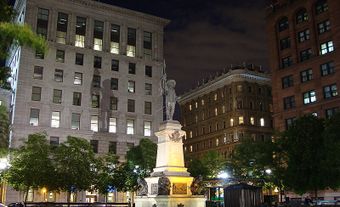Jean-Baptiste L'Heureux
Jean-Baptiste L'Heureux (b at L'Acadie, LC 25 June 1831; d at Midnapore, Alta 19 Mar 1919). L'Heureux studied for the priesthood but was never ordained; a tradition maintains that he was expelled from the Séminaire de St-Hyacinthe for a criminal offence. He came west in the late 1850s and by the early 1860s was in the Montana goldfields, where he passed himself off to the Jesuits as a priest. A short time later, L'Heureux was apparently caught in the act of sodomy and was sent away. Exposed as a fraud, he joined the Blackfoot and in 1862 went to the Oblate fathers at St Albert mission near Fort Edmonton; a year later, Bishop A.A. TACHÉ commented that the man "wanted to pass for a priest, but he is known by all to be a robber and a liar." The same year, L'Heureux was accused of sending a false sample of gold dust to prospectors in Ft Benton, Mont, claiming he had found a lode and would show them where it was located. A party of men spent weeks searching fruitlessly for him. L'Heureux's name also has been associated with the legend of the LOST LEMON MINE.
L'Heureux spent most of his time with the Blackfoot, performing marriages, baptisms, etc. In their language he called himself na-okska-tapi, Three Persons, after the Trinity. He prepared a census of the Blackfoot tribes, wrote a manuscript on stone effigies, described the land features in Blackfoot territory, prepared a Blackfoot-English dictionary and sketched Rocky Mountain House. In an 1871 manuscript, now in the NATIONAL ARCHIVES OF CANADA, he made what is probably the first reference to dinosaur remains in Alberta. He may also have named the St Mary River in southern Alberta and St Mary Lakes in Montana. An official witness to Treaty No 7 in 1877, L'Heureux was engaged as interpreter for the Indian department on the Blackfoot reserve about 1880. He remained there until 1891, when he was dismissed for giving religious instruction to preschool children. He became a recluse near Pincher Creek and in 1912 moved to Lacombe Home at Midnapore.

 Share on Facebook
Share on Facebook Share on X
Share on X Share by Email
Share by Email Share on Google Classroom
Share on Google Classroom

